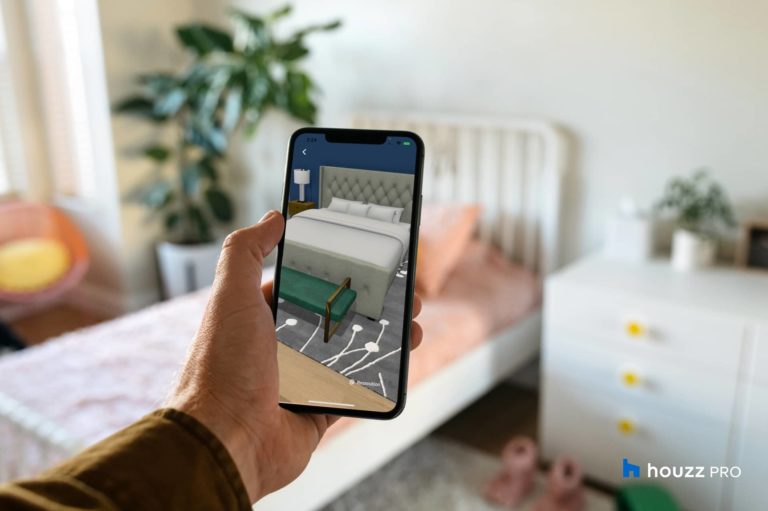
One of AR’s most opportune and under-exposed strategies is what we call B2B2C. This involves AR software that helps companies better reach or serve their customers. This segment is bigger than you may think, as it includes consumer AR developer tools or enabling tech.
But it also applies to non-tech sectors that use AR to improve products. As we’ve examined, companies like Streem bring AR to home-services pros to help them streamline operations by remotely diagnosing leaky faucets and broken heaters through a customer’s upheld smartphone.
Now, the latest company to tap into this opportunity is Houzz. This week, it launches an AR feature that lets home renovation pros visualize finished projects on site. Using the feature through a smartphone or tablet, they can help homeowners make and visualize design choices on the fly.
Housed in the Houzz Pro app, use cases include visualizing walls, windows, cabinets, and other design elements. The feature is built on Houzz’ 3D floor plans, which have tripled in use over the past year, the company tells AR Insider. An AR front-end now brings them to life.
Case Study: Streem Taps the ‘B2B2C’ Opportunity
Cosmetics to Couches
Panning back, this accomplishes a few things. First, it broadens the functionality of AR visualization. The technology has become popular for visualizing products, including everything from cosmetics to couches. This helps consumers gain more confidence before buying.
That’s been amplified further in a pandemic when social distancing and retail lockdowns bestow even greater value on the ability to gain IRL-like product dimension remotely. For example, in eCommerce, consumers can get a better sense of product fit, style, color, and texture.
Houzz has been a leader in AR visualization for all of the above reasons. But its View in My Room 3D feature focused on individual items like rugs and tables. Its latest development positions AR to tackle entire renovation projects by visualizing final results on a project-wide basis.
“View in My Room 3D […] made it clear that people crave a visual connection to their homes when making decisions.” Houzz co-founder and president Alon Cohen told us. “Now, pros can take [AR] a step further by immersing their clients in the design with a life-sized virtual tour.”
What’s Driving Houzz’ AR Success?
Motivated Adopters
The second thing this accomplishes for Houzz goes back to the B2B2C angle noted above. Going deeper on that principle, it brings AR to consumers through the professionals that serve them. It can be an optimal go-to-market strategy, as these pros are more motivated adopters.
To that end, home service pros can use tools like AR to differentiate themselves. Like with Streem, AR can provide an edge in their marketing and customer interactions, as well as operational efficiencies. For example, they can avoid downstream headaches like redoing work.
In other words, they’re better off with more informed and confident customer choices. This is analogous to AR’s ability to reduce product returns in eCommerce because of a more confident initial purchase. Home renovation pros could benefit from a higher-stakes version of that.
“Pros have let us know that the new feature can minimize the amount of back and forth communication typically involved in the planning stage by answering questions up-front,” said Cohen,” giving their clients confidence to move forward with the project.






